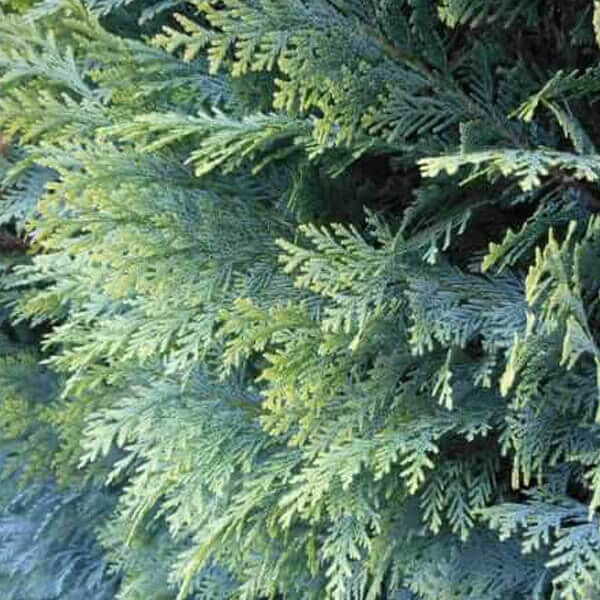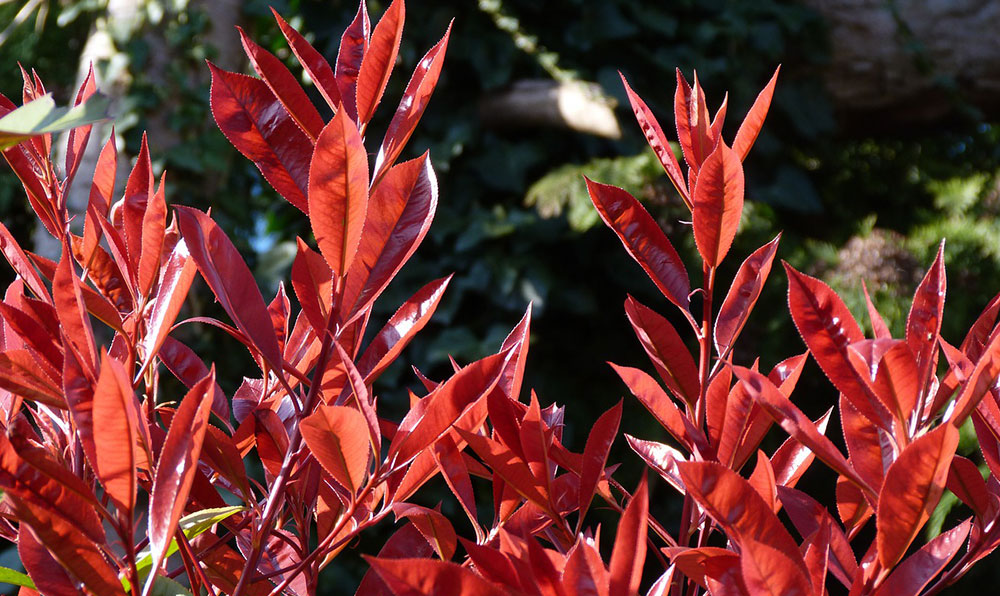Hedge Plants For Playground Borders
Hedge Plants For Playground Borders
Blog Article
Hedge Plants For Outdoor Layout
Boost your garden's appeal with lush hedge ranges such as Yew (Taxus), Thuja, Laurel, Photinia, and Bamboo, commemorated for their structural integrity and ecological advantages.
Yew and Thuja offer evergreen protection and winter durability, while Laurel uses fast development and broad, aromatic leaves.
Photinia adds seasonal appeal with its lively red foliage, and Bamboo lends a low-maintenance, peaceful atmosphere.
These hedges improve air quality, decrease sound, and develop tranquil, private spaces.
Correct planting, spacing, and upkeep ensure vigorous development and eco-friendly harmony.
Explore how these rich ranges can raise your garden's appeal and well-being.
Key Takeaways
Transform Your Garden With Lush Hedge Varieties
- Select Yew for its thick, evergreen growth and unequaled longevity.
- Opt for Laurel for its quick growth and broad leaves, ensuring quick personal privacy.
- Select Photinia for its lively seasonal foliage, which turns a striking dark red.
- Utilize Bamboo for a low-maintenance, winter-hardy hedge with visual appeal.
- Area plants 2-3 per meter and prune regularly for optimum development and health.
Popular Hedge Plants
When changing a garden with lush hedge ranges, it's vital to consider popular hedge plants such as Yew, Thuja, Laurel, and Photinia due to their unique qualities and benefits.
Yew (Taxus) is highly esteemed for its longevity and thick, green development, making it a prime choice for withstanding landscapes.
Thuja is noted for its evergreen foliage and robust winter resilience.
Photinia adds seasonal vibrancy with red leaves that darken gradually, developing vibrant visual appeal.
Laurel uses fast development and fragrant, broad leaves, suitable for quick privacy.
Additionally, Bamboo is an excellent choice for atmosphere, using a low-maintenance, winter-hardy choice that improves the garden's aesthetic with its elegant, swaying walking canes.
These choices accommodate a variety of horticultural needs and choices.
Advantages of Garden Hedges
Garden hedges provide a wide range of advantages, making them an important addition to any landscape. These natural barriers are affordable to implement and supply considerable wind protection, boosting air blood circulation and adding to sound reduction. The thick foliage of hedges like Thuja and Beech guarantees personal privacy by blocking exposure, creating a serene and remote environment.
Hedges also play a vital function in microclimate regulation, supplying a stable environment that promotes plant growth and decreases temperature fluctuations. Their detailed leaf structures filter contaminants, enhancing air quality and adding to a healthier garden community.
Moreover, hedges master sound reduction, soaking up and deflecting sound waves to lower ambient sound levels. This double functionality of supplying both visual and acoustic personal privacy boosts the general harmony and aesthetic appeal of any garden.
Planting and Maintenance Tips
For an effective hedge, precise preparation of the planting location is essential. Make sure the soil has proper pH and drainage to support strong root advancement.
Area the plants appropriately for the selected species. Water the hedge regularly during its initial growth stage, changing as needed with seasonal changes.
Execute a organized bug control and disease prevention technique, utilizing natural or chemical treatments when needed. Frequently check for aphids, mites, and fungal infections.
Apply mulch to retain moisture and reduce weeds. Seasonal pruning promotes thick development and air blood circulation, necessary for plant health.
Following these standards will help you cultivate a vibrant, well-maintained hedge that improves the appeal of your garden.
Spacing and Cutting Standards
Spacing and Cutting Standards
Correct spacing and cutting are vital for cultivating healthy, aesthetically appealing hedges. Adequate spacing ensures each plant receives sufficient nutrients, light, and airflow.
Follow these standards for optimum hedge upkeep:
- Spacing: Position hedge plants 2-3 plants per meter to motivate robust development.
- Pruning Methods: Routine pruning is important for preserving preferred hedge height and shape. Cut new growth in summer and cut back older wood throughout winter season.
- Seasonal Care: Change trimming techniques and schedules according to seasonal requirements to ensure plant health.
- Hedge Height: Frequently monitor and cut to maintain the preferred hedge height and achieve uniform aesthetics.
Sticking to these steps will ensure your hedge grows, improving both the appeal and functionality of your garden.
Picking the Right Hedge
Selecting the Right Hedge
Selecting the appropriate hedge includes assessing factors such as fully grown height, foliage density, and environmental durability. Successful hedge plant selection requires understanding each types' growth attributes and site-specific versatility.
For example, Yew (Taxus) uses outstanding durability and dense development, while Thuja is noteworthy for its winter season durability. Additionally, thinking about upkeep requirements is important; fast-growing types like Laurel or Privet demand routine trimming, whereas low-maintenance alternatives like Bamboo or Ivy might be more effective for those seeking very little maintenance.
Environmental aspects such as soil type, light schedule, and moisture conditions need to also direct the choice process. This cautious approach guarantees the picked hedges will grow, providing both visual and functional benefits to the garden landscape.
Shipment and Planting Advice
To guarantee your hedge plants prosper, they must be delivered by specialized couriers and planted quickly upon arrival.
Follow these vital steps for successful planting:
- Soil Preparation: Improve the soil with natural matter to enhance drain and nutrient content.
- Planting Depth: Create a trench two times the width and equivalent to the depth of the root ball.
- Watering Strategies: Water thoroughly after planting, keeping the soil regularly damp but not filled.
- Mulching: Use a layer of mulch to keep wetness and reduce weeds.
Customer Assistance and Service
Offered the important function of prompt help in horticultural pursuits, our customer support team is offered 6 days a week through telephone, e-mail, and social media to offer professional recommendations and promptly deal with any issues. Their dedication to quick response times guarantees client complete satisfaction by fixing questions connected to plant health, ideal planting approaches, and upkeep schedules.

This comprehensive support group, enhanced by an excellent 9.3/ 10 customer rating, highlights our commitment to improving the gardening experience for each client.
Frequently Asked Questions
How Long Does It Take for Hedge Plants to Establish?
Hedge plants normally need one to 3 years to end up being completely developed, with the exact period differing by types and growing conditions.
Reliable care throughout this important duration is necessary for robust growth. Consistent watering, watchful weed control, and appropriate fertilizer application are pivotal in promoting strong root development.
For example, fast-growing species like Laurel may establish faster, while slower-growing varieties such as Yew might take longer. Thorough upkeep speeds up the facility procedure, leading to dense and healthy hedges.
What Are the Best Hedge Plants for Personal Privacy?
The concern of the very best hedge plants for privacy includes assessing evergreen and deciduous choices.
Evergreen hedges like Thuja, Laurel, and Cypress provide year-round protection, making sure continuous personal privacy.
On the other hand, deciduous hedges such as Beech provide seasonal privacy, shedding leaves in cooler months.
Secret maintenance pointers for personal privacy hedges include routine trimming, fertilizing in spring, and proper spacing-- normally 2 to 3 plants per meter.
Furthermore, consistent watering and thorough weed removal are crucial for promoting healthy, thick growth.
Can Hedge Plants Bring In Wildlife to My Garden?
Yes, hedge plants can attract wildlife to your garden by offering important advantages like shelter, food, and nesting sites, thereby improving local biodiversity. For example, yew, holly, and laurel are excellent for bring in birds, while ivy supports a variety of pests.
Nevertheless, it is very important to keep in mind that there are some drawbacks, such as increased upkeep to handle pests and routine upkeep. Carefully picking and maintaining hedge varieties can assist stabilize these benefits and disadvantages, eventually fostering a lively and sustainable environment in your garden.
Are There Any Flowering Hedge Plants Available?
Yes, there are flowering hedge plants readily available that can enhance the charm of your garden.
For instance, Elaeagnus, likewise called Olive Willow, produces fragrant white flowers in the fall, including a touch of sophistication.
Photinia, another popular choice, showcases vibrant red leaves that develop into an abundant green, developing a dynamic visual effect throughout the seasons.
To guarantee these plants prosper, it's important to practice proper pruning techniques and seasonal maintenance, such as cutting new development in the summer season and cutting down in the winter season.
These measures will help maintain the health and aesthetic appeal of your flowering hedges.
How Do I Prevent Insects in My Hedge Plants?
To prevent insects in hedge plants, utilize natural insect control techniques and preserve appropriate hedge care. Present helpful pests like ladybugs, which victimize harmful bugs, to create a balanced ecosystem.
Regularly inspect your hedges for signs of invasion and quickly eliminate any affected parts to prevent the spread. Ensure the health of your hedges by applying well balanced fertilizers and supplying appropriate water.
Use mulching to keep soil moisture and proper spacing to lower plant tension and promote robust development. These practices collectively help in minimizing bug problems and preserving a healthy hedge.
Conclusion
In essence, choosing the right hedge ranges such as Yew, Thuja, and Laurel can change any garden into a peaceful haven. These plants supply year-round greenery, enhance visual more info appeal, and deal practical advantages like sound reduction and wind defense.
Appropriate planting techniques, accurate spacing, consistent watering, and seasonal cutting are important for optimal development.
Trusted shipment services and expert consumer support make sure a smooth experience from purchase to planting, making it simpler than ever to raise your outdoor area.
Garden hedges offer a plethora of benefits, making them an important addition to any landscape. These natural barriers are affordable to carry out and offer substantial wind security, boosting air flow and contributing to sound reduction. The thick foliage of hedges like Thuja and Beech guarantees personal privacy by obstructing presence, developing a secluded and peaceful environment.

Pruning Strategies: Routine pruning is important for maintaining wanted hedge height and shape. Trim new development in summertime and cut back older wood during winter season.
Report this page